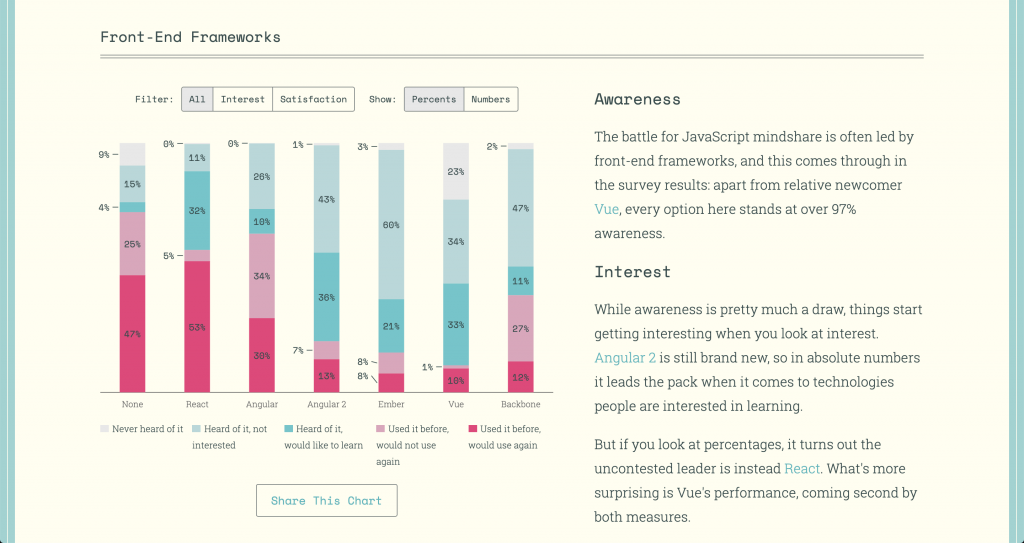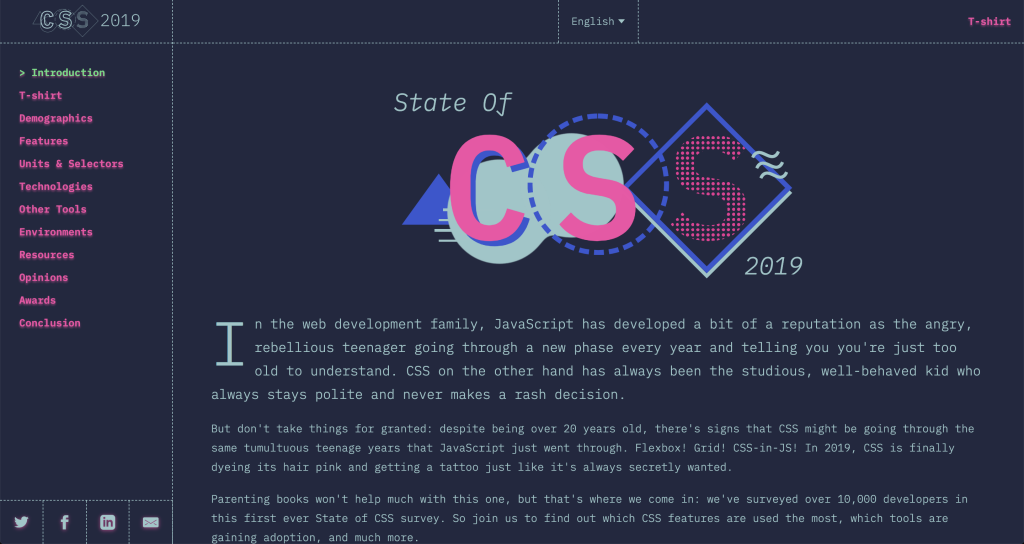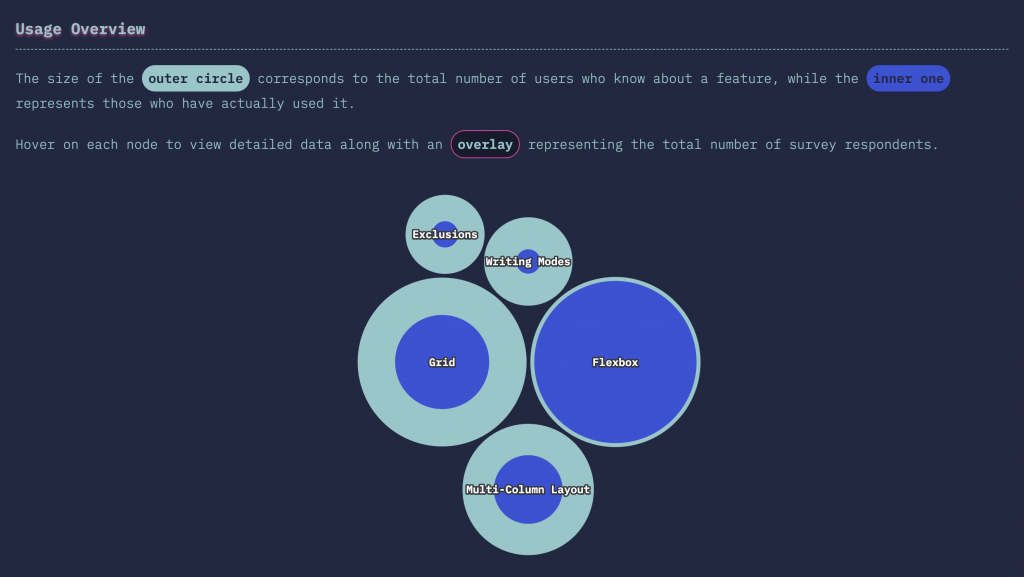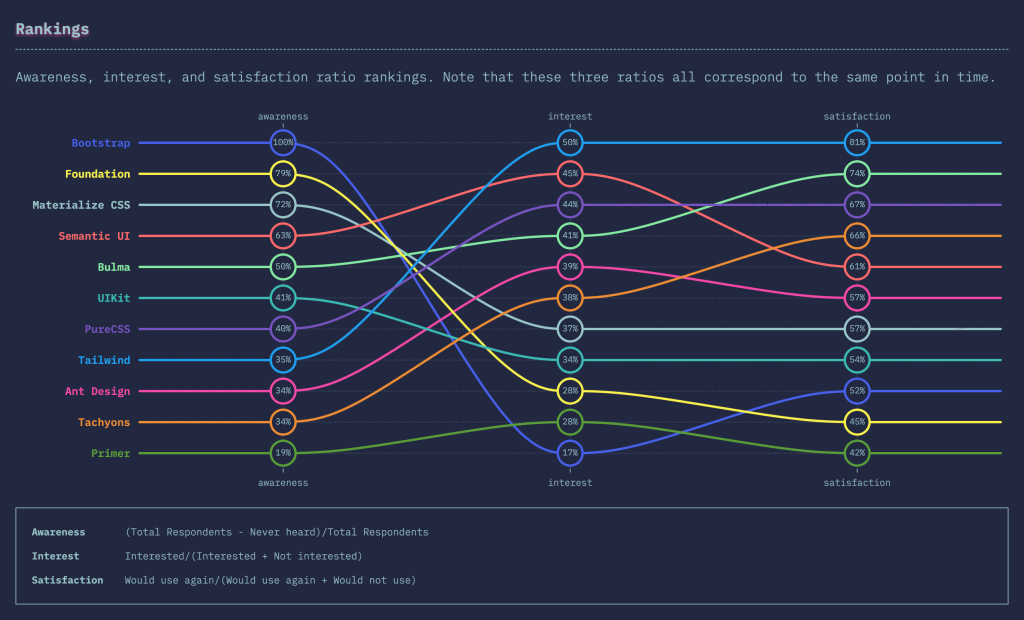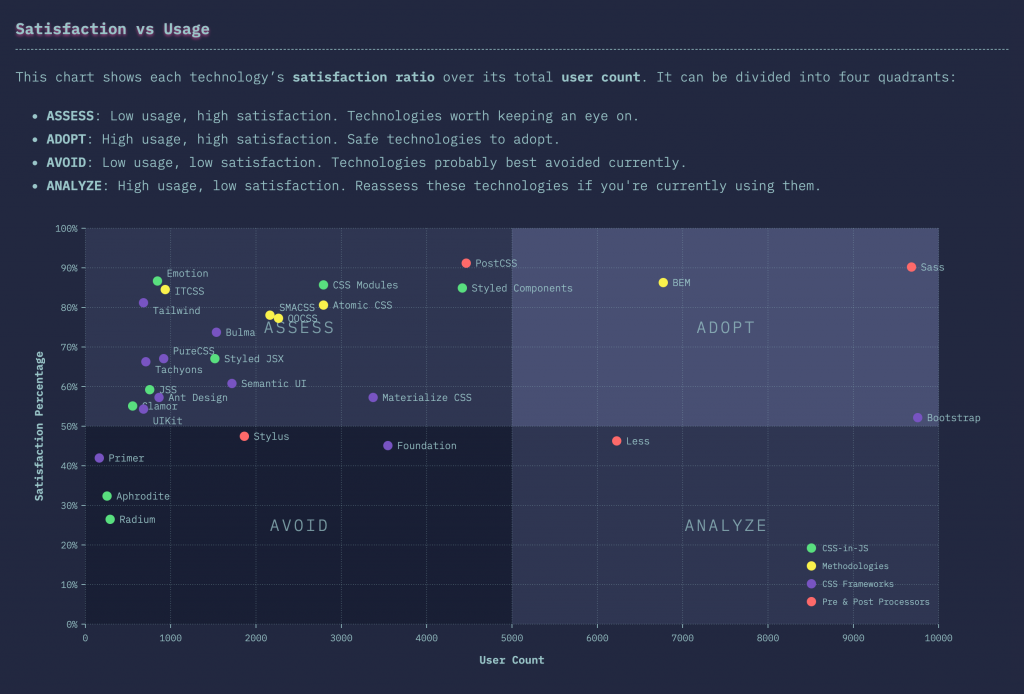As front-end developers, we’ve wished for a lot of things over the years — ways to center things in CSS, encapsulate styles, set an element’s aspect ratio, get finer-grained control over our colors, select an element based on its children’s properties, manage layers of specificity, allow elements to respond to the width of their parents… the list goes on and on.
And now that we got all we wished for and more, some of us are asking — do we now have too much CSS?
The dark times
If you, like me, came up in web development during CSS’s infancy, the idea of having too much of it seems ludicrous.
Back in the days, virtually the entire job description of a front-end developer consisted of dealing with CSS’s limitations. The clearfix hack to clear floats, the 100% padding hack to make square divs, not to mention semi-randomly applying unrelated properties to trick Internet Explorer into doing your bidding.
At the time, the browser was a devious foe to be defeated through sheer cunning and arcane incantations. Today, the perfect property is waiting and just a copy-paste away on MDN.
The new era of CSS
But today things are vastly different: not only are things moving much faster, but browser vendors actually care about making developers happy! I know, I couldn’t believe it either. But I run the yearly State of CSS developer survey (which is open now by the way — go take it!) and I know for a fact that browser development teams use the survey results (among many other data points) to inform their roadmap.
Beyond this, Google has also helped finance my work on the survey, and even hired Lea Verou to take the lead on selecting this year’s survey questions.
It’s not just Google. It’s become fashionable to bash Safari and Apple in general (sometimes deservedly so), but you can’t deny how passionate someone like Jen Simmons is about listening to developers and improving the web.
And not only are browser vendors improving CSS on their own; they’re even collaborating across battle lines with initiatives such as Interop 2023 to help reduce inconsistencies and incompatibilities between browsers.
Too much of a good thing?
The result of all this is that we are now faced with an embarrassment of CSS riches, and it can be hard to catch up. CSS Grid started being supported in major browsers almost five years ago, yet I still check a reference every time I use it. And as cool as subgrid seems, I’ve yet to even try it out.
During the process of selecting which CSS features to include or not in the State of CSS, Lea and myself considered many features, but we also rejected quite a few. Some examples of the feature we didn’t include are:
- The
linear()easing function, which lets you define easing curves with more granularity. - The
env()function, which lets you use variables defined by the browser or device. - The
scrollbar-widthproperty, which helps control a scrollbar’s appearance. - The
margin-trimproperty, which lets you control how a container’s children’s margins behave.
These are all potentially very useful, and would’ve all been big news during the CSS drought of past years. But in today’s context they have to fight for attention with much larger announcements, like the has() selector or CSS nesting!
Not excited
As Silvestar Bistrović writes, he is “not that excited about all these new CSS features.” This found an echo on Twitter, with Sara Soueidan stating that what she cares about is “practicality, not how shiny a feature looks at the moment.”
This may seem like a negative attitude, but I think it’s understandable. Nobody can be expected to keep up with so many new features!
Another unintended (or maybe, intended?) consequence is that the more complex CSS becomes, the more it raises the bar for any new company wanting to develop a browser engine — to say nothing of the added workload when it comes to maintaining and documenting all these new features.
CSS overreach
There’s also the very valid concern that CSS might be branching out into areas it’s not quite suitable to handle. That’s another thing Sara Soueidan pointed out when reacting to the new CSS Toggles experimental implementation (here’s a ticket discussing it):
Many have made the very reasonable point that this kind of behavior would be best handled by a new HTML element instead of managing toggle state purely through CSS, and that CSS may not be the best medium to ensure accessibility issues are properly addressed.
When CSS takes over something that was previously handled through JavaScript, this is generally seen as a good thing, as it often reduces the amount of code the browser has to load. So, I’m cautiously optimistic about CSS Toggles and trust that the CSS Working Group will properly address the concerns of the community. But there may yet come a day when we start to worry that CSS may be expanding beyond its borders and encroaching on HTML and JavaScript’s responsibilities.
New expectations
And maybe this is what needs to change: maybe we should drop the expectation that CSS developers have to know all of CSS?
This expectation stems from the days where CSS was an afterthought, that little annoying syntax you had to learn to make your button blue and bold just like the client asked. But I think we need to accept that today’s CSS might just be way too vast for a single person to master, especially in addition to other front-end duties.
As Michelle Barker puts it:
And that’s where I, myself, land in the end. I’ve made my peace with the fact that I will probably never use — or even know about — all possible CSS features. And this is coming from someone who runs a survey about CSS!
But these new features will surely be useful to someone. Someone will write blog posts about them, create cool CodePens with them, give talks about them. That person will be a cool, young, energetic developer who still have all their hair. In other words, it won’t be me — and that’s fine.
And maybe you’re worried that this new developer will be overwhelmed by all the stuff they have to learn at once. But do keep in mind all the things they won’t have to learn about, precisely because it’s been replaced by these newer alternatives. I know I’d take that deal anytime.
But think about it: in the past couple years, not only have we seen a huge increase in the number of devices we need to cater to, we’ve also started to recognize that we all consume the web in slightly different manners, whether due to disabilities, current context, or just personal preferences. Shouldn’t CSS adapt to this new reality?
Now, I have to confess this has all made me feel a bit nostalgic… so excuse me while I go clear a couple floats, just for old time’s sake.
As I mentioned, the yearly State of CSS survey is now open. Whether you think there’s too much CSS or not, the survey is a great way to let browser developers know how you feel, so go fill it out if you have 10 minutes.
Is There Too Much CSS Now? originally published on CSS-Tricks, which is part of the DigitalOcean family. You should get the newsletter.











